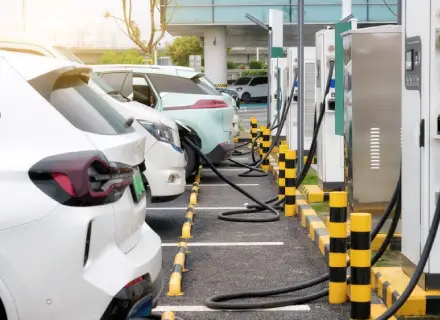Norway, a global leader in the electric vehicle (EV) revolution, continues to set ambitious benchmarks for sustainable transportation. In 2024, the country achieved an extraordinary milestone, with The Norwegian Road Federation (OFV) claiming the percentage of new automobiles sold that were fully electric increased from 82.4% in 2023 to 88.9% in 2024, putting the nation on track to meet its goal of only having electric vehicles on the road by 2025.
This remarkable achievement highlights the effectiveness of Norway’s EV policy framework, which combines forward-thinking goals with comprehensive incentives. As the nation races towards its target of selling only zero-emission vehicles by 2025, ten years ahead of the European Union’s similar goal, it is setting a precedent for the world.
Ambitious Goals Drive Policy
Norway has one of the most aggressive zero-emission vehicle policies in the world. The country’s 2025 goal is key to combating climate change and reducing greenhouse gas emissions.
Norway’s ambitious target is ahead of that of the European Union, which aims for the same target by 2035, demonstrating the country’s commitment to taking the lead on sustainable mobility.
Central to this vision is the government’s recent pledge to make sure that by 2026 more electric vehicles are bought than diesel-powered ones. This interim target will ensure gradual progress towards total electrification while also keeping Norway aligned with its higher-level goals.”
The Incentive Ecosystem
One of the cornerstones of Norway’s success has been its robust incentive framework. Recognising that affordability and convenience are critical to electric vehicle adoption, the government has implemented a range of measures to make electric vehicles competitive with traditional internal combustion engine (ICE) cars.
Electric vehicle buyers benefit from significant tax rebates, making EVs more accessible to a wider segment of the population. These rebates often offset the higher upfront costs associated with electric vehicles, making them comparable in price to petrol-powered vehicles.
EV owners are exempt from a variety of fees, including registration taxes and annual road taxes. This exemption provides long-term cost savings, further incentivising the shift towards zero-emission vehicles. Electric vehicle drivers enjoy free or reduced-cost access to public parking, toll roads, and ferries.
In addition, Norway has invested heavily in an expansive charging infrastructure, ensuring that electric vehicle owners have access to fast and reliable charging networks nationwide.
Incentives alone are not enough to drive transformative change. Norway has also focused on creating a cultural shift towards electric mobility. Through public awareness campaigns and partnerships with automakers, the government has educated citizens on the environmental and economic benefits of EVs.
The result is a population that is not only aware of the advantages of zero-emission vehicles but is also enthusiastic about adopting them.
Results And Challenges
Although almost all new car buyers in Norway have switched to electric vehicles, there are still some exceptions.
“The main buyers of ICE (internal combustion engine) cars in Norway are rental companies because many tourists are not familiar with EVs,” Hekneby stated.
However, other industries must adjust to the growing number of EVs on Norwegian roads. Fast electric chargers are gradually replacing gasoline pumps at gas stations. Anders Kleve Svela, a senior manager at Circle K, the biggest fuel store in Norway, stated, “We will have at least as many charging stalls as we have fuel pumps within the next three years.”
“In just a few years, over half of Norway’s automobiles will be electric. In light of that, we must build up our charging park,” he continued.
Because of the cold, drivers may have to wait a little longer to charge their EVs throughout the winter months.
Desire Andresen, 28, an in-home caregiver, remarked, “Sometimes I miss that I just can pump it full and drive off five minutes later,” as she charged her vehicle at a Circle K station outside of Oslo.
However, I feel more at ease in an electric vehicle… In addition to being better for the environment, diesel cars emit many odours.
Global Implications
Norway’s success story offers valuable lessons for other nations aspiring to accelerate EV adoption. Key takeaways include policy consistency, which provides clarity to automakers, investors, and consumers, fostering confidence in the transition to electric vehicles.
Combining financial incentives with infrastructure investments ensures that EVs are both affordable and practical. Engaging citizens through education and awareness campaigns is essential to building widespread support for sustainable transportation.
As Norway approaches its 2025 goal, the focus is shifting to sustaining momentum. Promoting second-hand EV markets can ensure inclusivity and broaden adoption among lower-income groups. Supporting research and development in battery technology and sustainable materials will address long-term resource challenges. Norway is leveraging its position as a pioneer to influence global policy discussions on zero-emission mobility.
As the world grapples with the urgent need to combat climate change, Norway’s model serves as a beacon of hope and a blueprint for success. By fostering innovation, ensuring affordability, and engaging its citizens, the country is proving that a zero-emission future is not only achievable but also within reach.
With its unwavering commitment to sustainable mobility, Norway is not just redefining transportation but also inspiring the world to envision a cleaner, greener tomorrow.
Christina Bu, who chairs the Norwegian EV association, said, “Norway will be the first country in the world to pretty much erase petrol and diesel engine cars from the new car market.”

